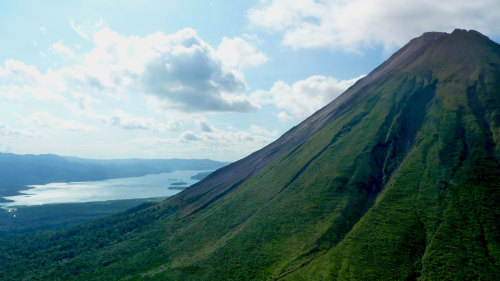When Napoleon passed through tiny San Marino back in 1797, he was so amused by the nation that he offered to increase its size. His offer was declined, and San Marino remains one of Europe's smallest countries. And it's still amusing to travelers who are just passing through. In fact, San Marino has so devoted itself to tourism that the entire country resembles a kind of roadside attraction, complete with spiffed-up mountain villages with picturesque medieval streets.
Still, few travelers actually set out with San Marino as their primary destination. Except for the stray stamp collector on a personal quest, most visitors to this tiny republic are either Italians who live nearby or curious tourists exploring the Italian regions of Emilia Romagna and Marche. San Marino offers a pleasant inland contrast to the crowded beaches of nearby Rimini, Italy. Most visitors spend a day shopping in San Marino's duty-free stores, purchasing local stamps, visiting the country's small museums, hiking the castle route and enjoying the sweeping views of the Adriatic Sea.
Geography
San Marino, with an area of 24 sq mi/62 sq km, is surrounded by Italy and located just inland from the Italian coastal city of Rimini. Set on the slopes of beautiful Mount Titano that rise 2,500 ft/750 m above sea level, the republic is almost as tall as it is wide.
Though San Marino was isolated and poor just 40 years ago, the country today has one of the highest per capita incomes in the world, thanks to the discount shops that line its streets. Tourism is its main source of revenue.
History
According to legend, the country was founded in the fourth century by a stonecutter named Marinus, who had fled religious persecution in present-day Croatia. Marinus built a chapel on Mount Titano, lived a saintly life and was eventually canonized. Before he died, Marinus bequeathed the mountain to a local community with the stipulation that freedom and Christianity must always be protected.
Regardless of the veracity of this story, San Marino has gloried in its reputation as a place of asylum, a reputation that was enhanced when it granted refuge to Italian patriot Giuseppe Garibaldi during the struggle for Italian unification. Although it protected the supporters of a unified Italy, San Marino didn't join the party, instead retaining its independence. The Serene Republic of San Marino achieved this status because of its small size, remoteness and its relative poverty at the time.
Despite its declared neutrality, the city-state was heavily bombed during World War II. (The republic keeps a small army—complete with blue uniforms, plumed helmets and sabers—though its duties are primarily ceremonial.)
Snapshot
San Marino's main attractions are shopping, culture, historic sites, medieval fortresses, stunning scenery, architecture, ruins and art—unbelievably all packed into one little package.
San Marino will appeal primarily to visitors headed to central Italy who are interested in discount shopping. Don't go there expecting to get a break from Italy's heavily touristed areas: San Marino has become one of them.
Potpourri
Citizens of San Marino enjoy one of the highest standards of living in Europe, although tourism is essentially the country's only industry.
Abraham Lincoln was made an honorary citizen of San Marino (see his bust in the Palazzo Pubblico). In his thank-you letter, Lincoln said, "Although your dominion is small, nevertheless your state is one of the most honored throughout history."
San Marino has two heads of state who serve jointly.
San Marino has been a member of the U.N. since 1992. It's also a member of the World Bank.
About 10,000 of its citizens live outside the country, many in Detroit and New York City.
National Day, 3 September, is the country's biggest holiday. During medieval festivities held then, the Sammarinesi (as residents are known) don costumes and hold a crossbow tournament and a religious procession, carrying the relics of St. Marino, followed by fireworks. Another crossbow championship is held in July, and there are several art and folk festivals throughout the summer.
































